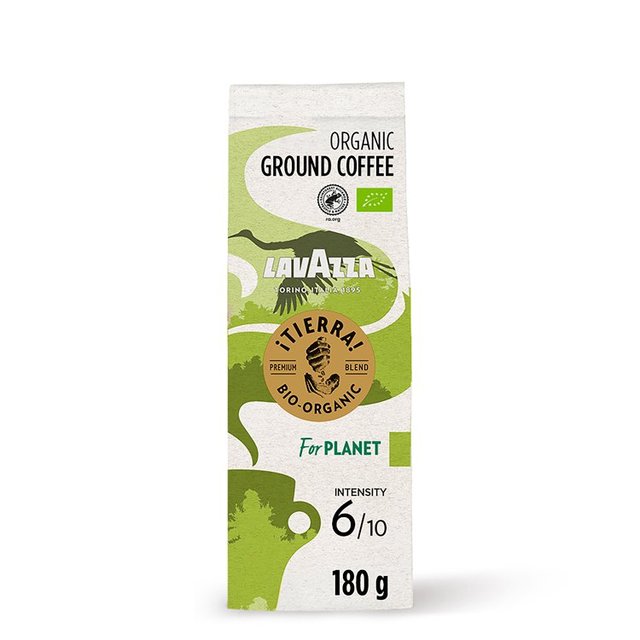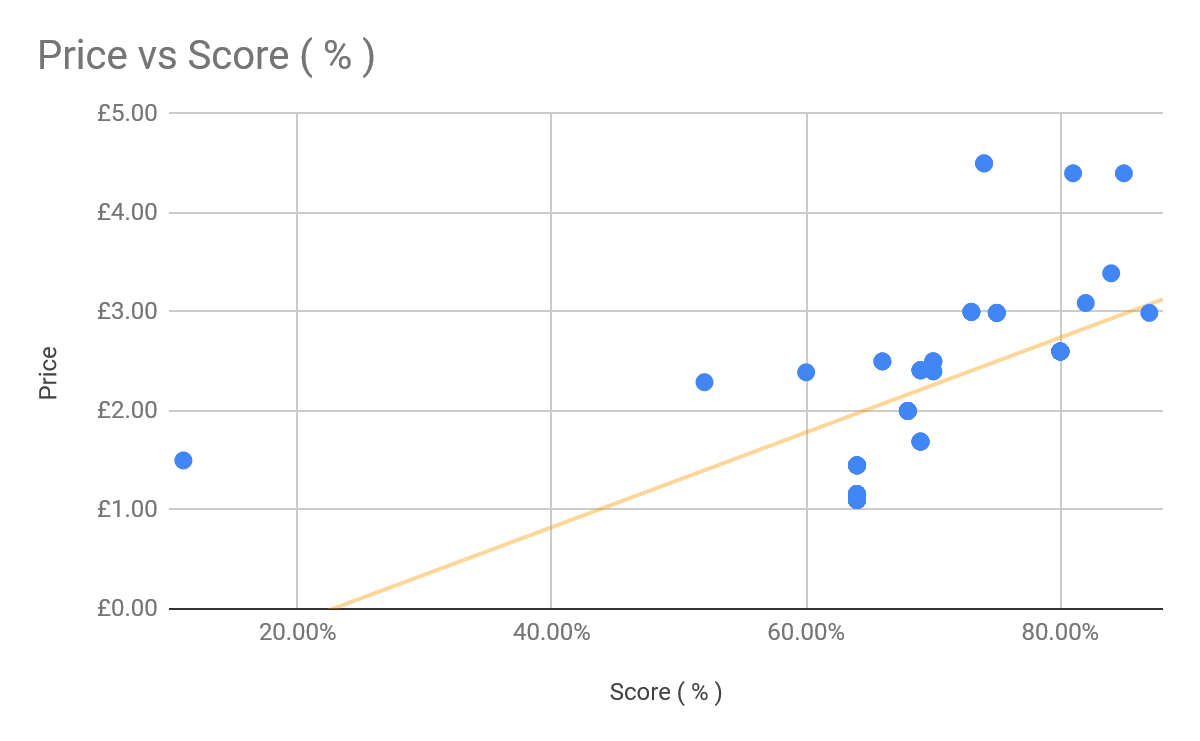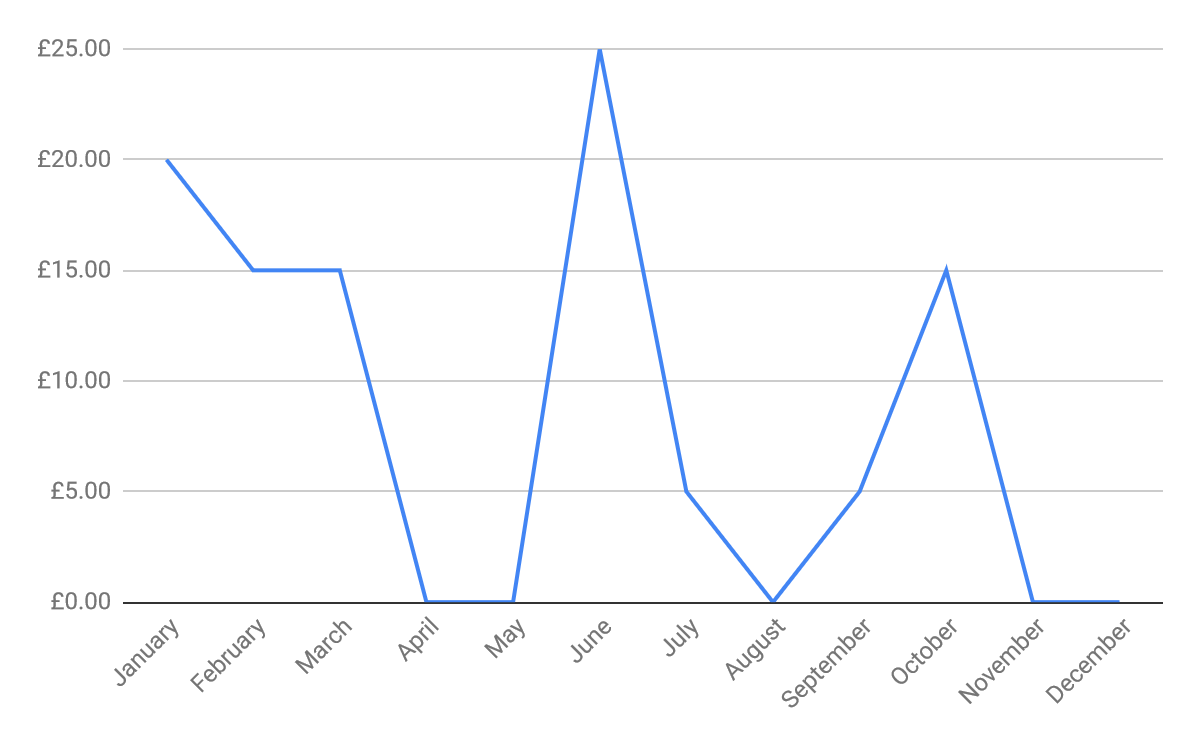Coffee Club
Our team has a very committed tea club. When I rejoined a teapot was nearly always in use. Late 2018 I decided to make a sister club, the coffee club, for those needing some of that beany goodness.
Inspired by a previous colleagues excellent cake data post I wanted to make sure the club was transparent and data-informed. This is also the 2nd formal coffee club I have run. The last one did track coffee consumption but was more about scoring quality.
The coffee club was ran in the open with an accompanying spreadsheet tracking our consumption. You can enjoy that artefact right here.
How did coffee club work?
Typically I would buy coffee and bring it in. We’d all contribute to making and cleaning the cafetiere. It was nearly always ground coffee (one week we had beans and wonderful colleague Isaac brought in a grinder). After the coffee was drunk, i’d muse, chat with colleagues and take responsibility for scoring. This has drawbacks but leaves room for iteration in 2020.
I always drunk the coffee black, no milk of any kind. Typically quite strong, so much so someone has said the coffee tasted like “tar”.
Coffees
 I tended to buy in bulk. So as you can see some coffee re-appeared.
I tended to buy in bulk. So as you can see some coffee re-appeared.
The total amount of ground coffee ended up being 14.792kg. That’s about the weight of an African civet.

I measured strength but think I didn’t do the greatest job always recording it. Average strength of the coffee was 4.85 (highest being a 6). I think it’s fair to say I tended to buy the stronger tasting coffee.
Scores
Best - Lavazza Tierra Organic Ground Coffee
Score: 87%

Lavazza Coffee won out but only slightly. Our freshly ground Cafe Direct D.R.Congo (whole beans) from London Fields Roastery was a very close second.
Worst - Vanilla Coffee from Zanzibar
Score: 11%
I went to Zanzibar this year. I went to a farm which grew its own coffee beans and grew vanilla. I bought some vanilla coffee. It was absolutely vile. We even tried to cut it with other coffee to balance it out but all it would do is make any drink taste of paint. We had a bag of coffee bought and brought from the United States this year too.
Average Score
All scores averaged left us with 69.38%. As it was only me scoring I’ll be honest the 70% range is pretty decent. As a baseline a cup of coffee from Costa would likely not creep over the 58% region. From my point of view the standard is high-ish.
Trend
 Damn that vanilla coffee was awful, a real outlier. The above graph shows a trend that the higher the price of coffee then the higher the taste score.
Damn that vanilla coffee was awful, a real outlier. The above graph shows a trend that the higher the price of coffee then the higher the taste score.
Cost
I spent in total £136.18. This led to;
- Avg cost of the bag of coffee = £2.23
- Median cost of the bag of coffee = £2.40
Funding
I asked teammates to contribute to the club on an ad-hoc basis. I usually suggested around £5 and for them to decide how often they contribute based on how much they think they drink. It is essentially a honour system.
Total funding at year end amounted to £100. That means my individual contribution was £36.18. To be honest I probably drink the most so I don’t feel robbed.
When did funding occur?
 Funding seems to come in peaks and troughs. Spikes in June and October made up 40% of funding. Perhaps I should look at a regular slack reminder for 2020 about have you remembered to fund coffee club?
Funding seems to come in peaks and troughs. Spikes in June and October made up 40% of funding. Perhaps I should look at a regular slack reminder for 2020 about have you remembered to fund coffee club?
Money saved?
Calculating that it’s about 18grams for a double espresso shot (coffee we make is strong). We can work out that with the coffee used we could of have about 924.5 double espressos from an espresso machine. If we roughly say that costs around £2 in lots of London joints then if we drunk the same amount of coffee we’d have paid about £1849.
Since we paid £136.18 the saving is £1712.82. We paid only 7.4% of what we could have. I think we can summarise and say it was good value for money.
Potential iterations?
As I sit here right now I can think of some tweaks for 2020. I think I’ll invest in more expensive coffee based on the trend of more expensive coffee and higher value score. I might try push the average price closer to the £3 mark.
Other changes;
- try get more people to score the taste to balance out my biases
- record origin of coffee
- record date first drunk
- measure carbon footprint?
- potentially try alternate method of coffee making and record?
Retrospective with users
Obviously the real answer is I should co-design the service for 2020. As invested participants I can facilitate how we want the new decade’s club to run and take on more qual feedback. That is on the to do list.
Was it worth it?
Making coffee with colleagues has provided a type of communal social glue. It also has provided fuel for some of our (hopefully) impactful work.
I’ve enjoyed the recording. It’s nice to have evidence of 1 year’s endeavours.